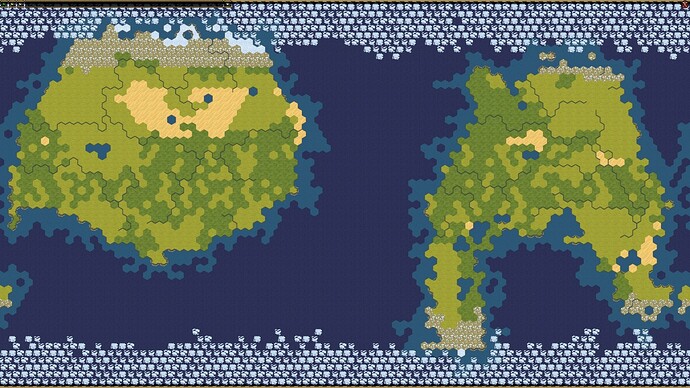The map is updated. But there are some other suspicious mountains. It seems that they prefer feet in US (despite ele=* definition) , so hills are three times higher then in Europe.
@Wulfmorn I’ve thought of it!
I’ve thought that maybe I can make an Earth Map for Civilization 6 game solely from OSM data, especially since maps in Civ6 are based on the same hexagonal grid and format is open, so it could be a simple export script.
(random map form Civ6 game)
However, despite that geography model is very primitive in Civ6, we still do not have relevant data in OSM for that.
There are just 5 types of terrain in Civ6, which are rather types of soil:
SNOW (permafrost)
TUNDRA
GRASSLAND (more fertile soil)
PLAIN ( a bit less fertile soil)
DESERT
3 types of “features”:
FOREST
JUNGLE
WETLAND
and three types of relief:
FLAT
HILLS
MOUNTAINS
As simple as that!
However, in OpenStreetMap we do not yet have permafrost and tundra mapped, no distinction between “grassland” and “plain”, and no distinction between woods and jungles (we still argue about woods vs forests, and only 10% of woods have tags specifying leaf types), to say nothing of the white spots. Luckily, wetlands are present in abundance in OSM ![]()
There are occasional natural=hills and natural=mountain|massif, but i suspect they do not form consistence coverage.
